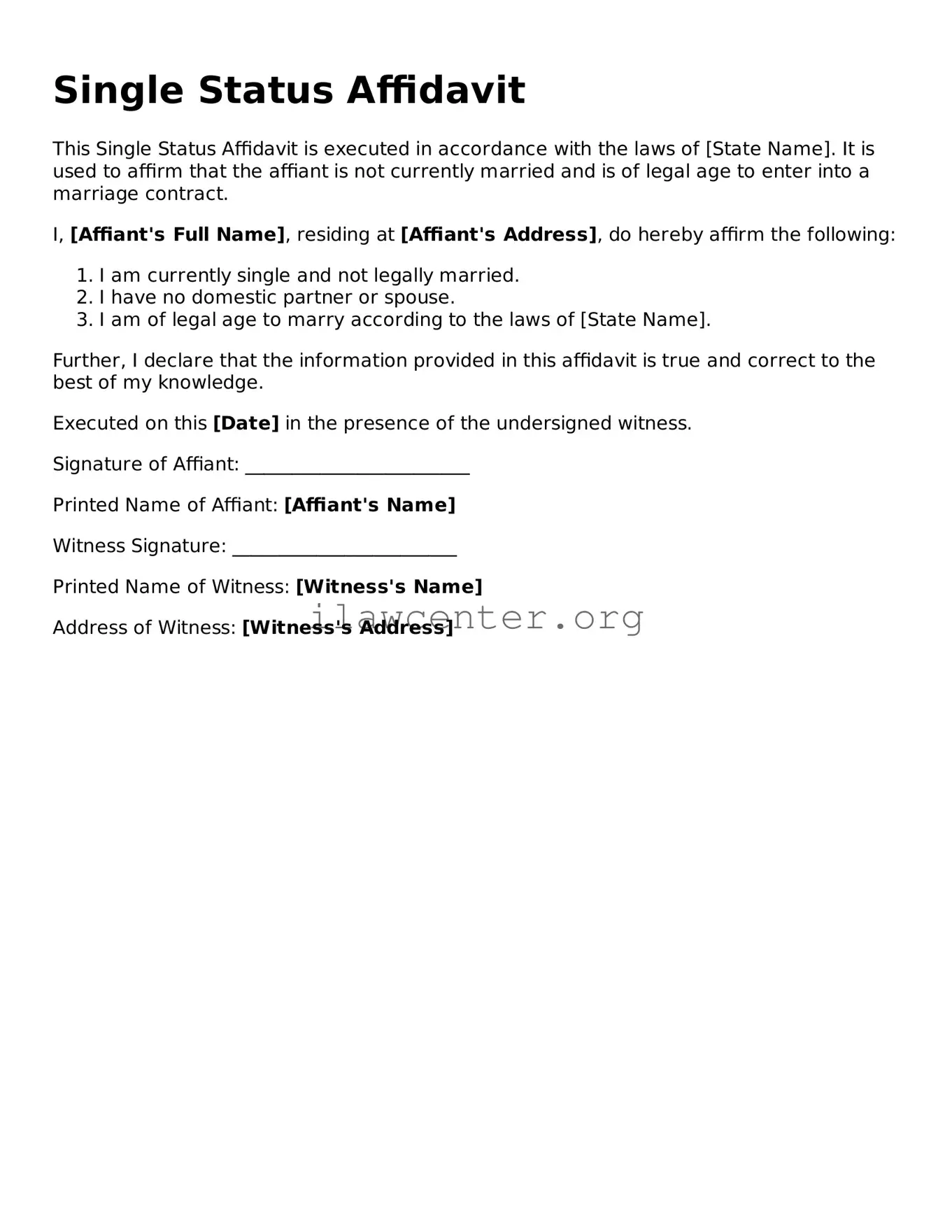Instructions on Utilizing Single Status Affidavit
After obtaining the Single Status Affidavit form, you'll be ready to provide the necessary details about your marital status. Completing this form accurately is essential for various legal and personal purposes. Follow these steps carefully to ensure it is filled out correctly.
- Start by writing your full legal name in the designated space at the top of the form.
- Next, provide your date of birth. Make sure to check that the format is correct—month, day, and year.
- Indicate your current address. This should include your street address, city, state, and ZIP code.
- In the next section, confirm your marital status by checking the box that applies to you. If single, specify that you are unmarried.
- List any previous marriages you may have had, including dates and the names of your former spouses, if applicable.
- There might be a section that asks for witness information. Provide the name and contact information of someone who can confirm your status if needed.
- Sign the form in the designated area. Make sure to date it at the same time.
- Finally, ensure that the form is notarized. This might require you to visit a notary public, so be prepared to show identification.
Once you’ve completed the form, keep a copy for your records. You may need to submit the original to the relevant authority or organization requesting it. Be aware of any specific submission guidelines that may apply.
